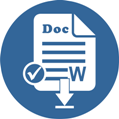Factors affecting poverty using a geographically weighted regression approach (case study of Java Island, 2020)
DOI:
https://doi.org/10.12928/optimum.v13i2.7993Keywords:
Poverty, Human development index, Regional minimum wage, GRDP per-capita, GWRAbstract
Poverty is still the main problem in development both at the national and regional levels. The poverty reduction program carried out has not paid attention to spatial aspects so that the policies taken are often not on target. This study aims to see the spatial pattern of poverty in Java Island which includes Banten, DKI Jakarta, West Java, Central Java, DI Yogyakarta and East Java. The method used is geographically weighted regression (GWR) with addiptive weighting of the Gaussian Kernel which is processed with QGIS, Geoda and GWR4 software. This approach can identify spatial patterns that cannot be identified in ordinary regression analysis as found in previous studies. The data used in this study is secondary data in 2020 sourced from the Badan Pusat Statistik (BPS) and government website. The results of the study showed positive and group spatial autocorrelation in 34 districts/cities. There are 65 districts/cities in Java Island only affected by HDI, 4 districts/cities affected by TPT and HDI, 47 districts/cities affected by MSEs and HDI, and 3 districts/cities affected by TPT, UMK and HDI. The government can improve the quality of education, the level of public health services, and provide job training to reduce poverty.
References
Anselin, L. (1988). Spatial econometrics method and models. Dordrecht: Kluwer Academic.
Astuti, P., Debataraja, N. N., & Sulistianingsih, E. (2018). Analisis kemiskinan dengan pemodelan geographically weighted regression (GWR) di Provinsi Nusa Tenggara Timur. Buletin Ilmiah Matematika Statistika Dan Terapannya, 7(3), 169–176.
Bappenas. (2008). Buku panduan perencanaan dan pengangguran yang berpihak pada masyarakat miskin. Badan Perencanaan Pembangunan Nasional.
Caraka, R. E., & Yasin, H. (2017). Geographically weighted regression (GWR) sebuah pendekatan regresi geografis (1st Editio). Mobius Graha Ilmu.
Fadila, R., & Marwan. (2020). Pengaruh indeks pembangunan manusia (IPM) dan pertumbuhan ekonomi terhadap tingkat kemiskinan di Provinsi Sumatera Barat periode tahun 2013-2018. Jurnal Ecogen, 3(1), 120–133.
Fosu, A. K. (2017). Growth, inequality, and poverty reduction in developing countries: Recent global evidence. Research in Economics, 71, 306–336.
Ishengoma, E. K., & Kappel, R. (2006). Economic growth and poverty: Does formalisation of informal enterprises matter? German Institute of Global and Area Studies, 1–39.
Lestari, E. P., Rahayu, H. C., Retnaningsih, T. K., & Suhartono, S. (2022). Significant role of the human development index in alleviating poverty. Journal of Social Economics Research, 9(3), 147–160. https://doi.org/10.18488/35.v9i3.3170
Loka, R. D. P., & Purwanti, P. A. P. (2022). The effect of unemployment, Education and the number of population on the poverty level of regency/city in Bali Province. International Journal of Economics, Business and Accounting Research (IJEBAR), 6(2), 1046. https://doi.org/10.29040/ijebar.v6i2.5357
Lu, B., Charlton, M., Harris, P., & Fotheringham, A. S. (2014). Geographically weighted regression with a non-euclidean distance metric: A case study hedonic house price data. International Journal of Geograhical Information Science, 28(4), 660–681.
Mulok, D., Kogid, M., Asid, R., & Lily, J. (2012). Is economic growth sufficient for poverty alleviation? Empirical evidence from Malaysia. Cuadernos de Economía, 35, 26–32.
Nashwari, I., Rustiadi, E., Siregar, H., & Juanda, B. (2017). Geographically weighted regression model for poverty analysis in Jambi Province. Indonesian Journal of Geography, 49(1), 42–50.
Pratama, Y. C. (2014). Analisis faktor-faktor yang mempengaruhi kemiskinan di Indonesia. Jurnal Bisnis Dan Manajemen, 210–223.
Prawoto, N. (2009). Memahami kemiskinan dan strategi penanggulangannya. Jurnal Ekonomi Dan Studi Pembangunan, 9(1), 56–68.
Pribadi, W., & Kartiasih, F. (2020). Environmental quality and poverty assesment in Indonesia. Jurnal Pengelolaan Sumberdaya Alam Dan Lingkungan (Journal of Natural Resource and Environmental Management), 9(1), 56–68.
Rofiq, A. (2014). Pertumbuhan ekonomi dan kemiskinan: Kebijakan dan tantangan masa depan. Republika.
Sholihin, M., Soleh, M. A., & Djuraidah, A. (2017). Geographically and temporally weighted regression (GTWR) for modeling economic growth using R. International Journal of Computer Science and Network, 6(65), 800–805.
Sudiharta, P. S., & Sutrisna, K. (2014). Pengaruh PDRB per kapita, pendidikan dan produktivitas tenaga kerja terhadap kemiskinan di Provinsi Bali. E Journal Ekonomi Pembangunan Universitas Udayana, 3(10), 431–439.
Sukanto, Juanda, B., Fauzi, A., & Mulatsih, S. (2019). Analisis spasial kemiskinan dengan pendekatan geographically weighted regression: Studi kasus Kabupaten Pandeglang dan Lebak. Tata Loka, 21(4), 669–677.
Todaro, M., & Smith, S. C. (2012). Economic Development (11th ed.). PEARSON.
Widiyanti, K. Y., Yasin, H., & Sugito. (2014). Pemodelan proporsi penduduk miskin Kabupaten dan Kota di Provinsi Jawa Tengah menggunakan geographically and temporally weighted regression. Jurnal Gaussian, 3(4), 691–700.
Wuranti, H. (2022). Increasing risk of poverty in Central Java due to the covid-19 pandemic. Optimum: Jurnal Ekonomi Dan Pembangunan, 12(1), 53–64.
Yacoup, Y. (2012). Pengaruh tingkat pengangguran terhadap tingkat kemiskinan Kabupaten/Kota di Provinsi Kalimantan Barat. Jurnal Ekonomi Sosial, 8(3), 176–185.
Downloads
Published
Issue
Section
License
Copyright (c) 2023 Bernica Tiyas Belantika, Bagus Rohmad, Hawa Dwi Nur Arandita, David R. Hutasoit, Fitri Kartiasih

This work is licensed under a Creative Commons Attribution-ShareAlike 4.0 International License.








